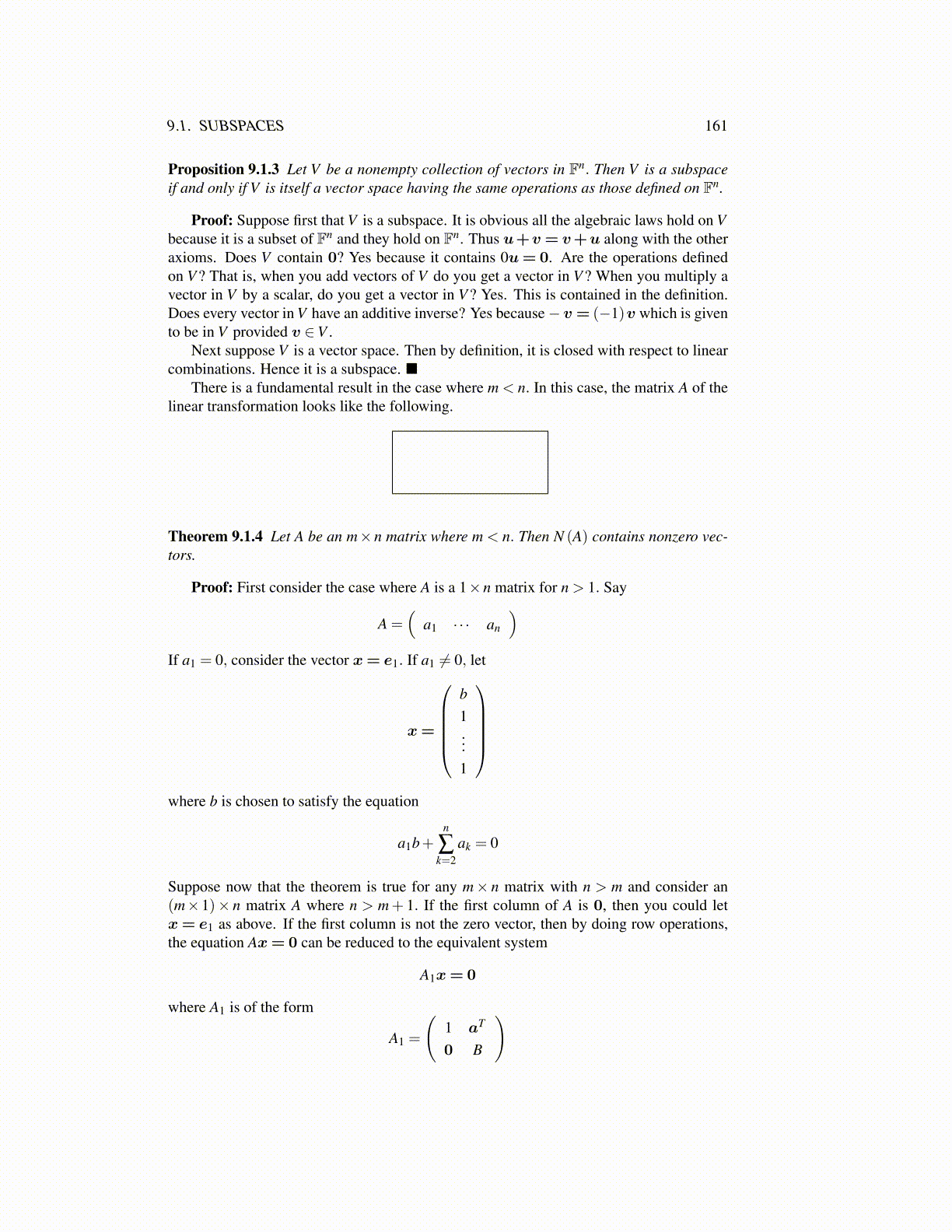
9.1. SUBSPACES 161
Proposition 9.1.3 Let V be a nonempty collection of vectors in Fn. Then V is a subspaceif and only if V is itself a vector space having the same operations as those defined on Fn.
Proof: Suppose first that V is a subspace. It is obvious all the algebraic laws hold on Vbecause it is a subset of Fn and they hold on Fn. Thus u+v = v+u along with the otheraxioms. Does V contain 0? Yes because it contains 0u= 0. Are the operations definedon V ? That is, when you add vectors of V do you get a vector in V ? When you multiply avector in V by a scalar, do you get a vector in V ? Yes. This is contained in the definition.Does every vector in V have an additive inverse? Yes because− v = (−1)v which is givento be in V provided v ∈V .
Next suppose V is a vector space. Then by definition, it is closed with respect to linearcombinations. Hence it is a subspace. ■
There is a fundamental result in the case where m < n. In this case, the matrix A of thelinear transformation looks like the following.
Theorem 9.1.4 Let A be an m×n matrix where m < n. Then N (A) contains nonzero vec-tors.
Proof: First consider the case where A is a 1×n matrix for n > 1. Say
A =(
a1 · · · an
)If a1 = 0, consider the vector x= e1. If a1 ̸= 0, let
x=
b1...1
where b is chosen to satisfy the equation
a1b+n
∑k=2
ak = 0
Suppose now that the theorem is true for any m× n matrix with n > m and consider an(m×1)× n matrix A where n > m+ 1. If the first column of A is 0, then you could letx= e1 as above. If the first column is not the zero vector, then by doing row operations,the equation Ax= 0 can be reduced to the equivalent system
A1x= 0
where A1 is of the form
A1 =
(1 aT
0 B
)